Managing the Project Schedule - Free eBook in PDF Format
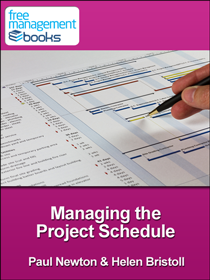 |
 |
|
Book Description - ISBN 978-1-62620-981-3 (54 Pages)
This free eBook describes the process of managing the project schedule. Most project management software programs will help you with managing the time line of the project schedule but they are no substitute for being able to identify activities, sequence them and estimate the time and resources required to complete them.
Chapter 1 - Managing the Project Schedule
This includes all of the processes required to manage the timely completion of the project. It involves determining the delivery dates and milestones whilst taking all of the known constraints into account.
Chapter 2 - Defining the Project Activities
The high-level requirements are broken down into high-level tasks or deliverables. These are then broken down into activities and presented in the form of WBS (Work Breakdown Structure).
Chapter 3 - Sequencing the Project Activities
The activities identified in the previous step should be sequenced based on the order in which they need to be done depending on their interdependencies.
Chapter 4 - Estimating the Resources Required
The estimation of the amount and the types of resources required for activities is done in this step. The project management team will need a clear understanding of resource availability and capability.
Chapter 5 - Estimating the Time Required
This is a key step in the project planning process and there are a number of tools that can also be utilized to help you to estimate the required activity resources. Most of the organizations follow either Work Breakdown Structure (WBS) based estimating or Function Points based estimates in this step. Once the activity estimates are completed, the critical path of the project should be identified in order to determine the total project duration. This is one of the key inputs for the project time management.
Chapter 6 -Developing the Schedule
In order to create an accurate schedule, several parameters from the previous steps are required including: the activity sequence, duration of each activity, and the resource requirements. Software packages, like as Microsoft Project, can help you to develop a project schedule including planning diagrams that can help to present the relevant information in a way that makes it easy to understand.
Chapter 7 - Controlling the Schedule
Monitoring and controlling and is sometimes referred to as 'working the plan' in contrast with the first five processes which are all to do with 'planning the work'. No project can be executed without changes to the original plans and schedules and this process will run throughout the project.
| You will learn: |
|
![]()
![]()
Background
Costs are not the only things that need to be estimated and managed during a project - time is just as important, if not more so. When getting started on a project, it is crucial to set an accurate time line for the upcoming work so that progress can be made and goals can be met successfully. When too much time is allocated for a project, things might not get done as quickly as they could have otherwise. If not enough time is permitted, the team may get frustrated by constantly falling behind and the work could suffer.
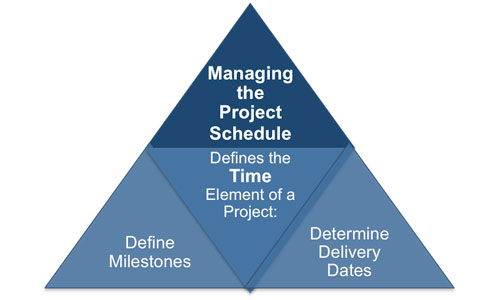 |
The ability to accurately forecast the project schedule is something that is developed with experience and through trial and error. It should be rather obvious why schedule management is so important when it comes to running any kind of project within your organization. If you don't manage time successfully, resources or opportunities are sure to be wasted. The more time that employees are spending on a specific project, the more expensive that project becomes. When a one-month project ends up taking two, the costs in some areas of the budget are likely to be doubled - potentially turning a successful endeavor into a failure.
It isn't good enough in most cases to just get a project finished. Rather, it needs to be finished and kept on time and on budget in order to be deemed a success.
While each individual project will undergo a slightly different scheduling process depending on the specific elements involved, there are generally two facets that a project manager will go through with respect to time.
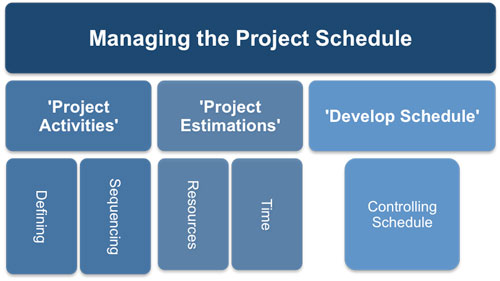 |
Planning the Work
These are the activities that occur before the project even gets started. The manager and other members of the team will work together to break the overall project down into smaller segments and allocate a certain period of time for each. At this point, it is also important that the various steps of the project are organized in a sequence that will be most time-effective for everyone on the team. For example, if one department can't get started on their portion of the project until another department is finished, this sequencing will need to be taken into account.
 |
One of the vital elements that needs to be considered during the planning process is experience with the various tasks that will be conducted. This is why it is so helpful to involve team members who may have worked on similar types of projects previously.
As a project manager, you might not have the relevant experience with some of the specific tasks that is needed to accurately allot time for them to be finished. By working with a member of your team who is an expert in that particular task, they should be able to tell you what a reasonable amount of time is for the work that will be done.
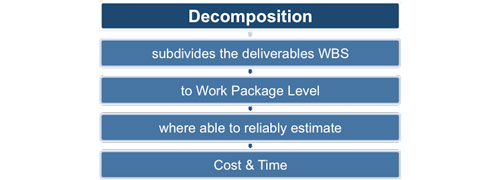 |
Bringing in experience is a valuable benefit that should be taken advantage of whenever possible. A significant part of this work involves the process of decomposition and taking the work packages down to its lowest level in the work breakdown structure (WBS). Having identified each work package theses must then be put into a sequential order to develop the project schedule and to discern the type of dependencies that exist between them.
 |
Then the amount of resources required and time needed to perform each activity must be estimated and developed into a final project schedule. Now having planned how the project will be performed in terms of its activities as project manager you need to ensure that it runs according to the time plan that has been agreed.
Controlling the Work
Once the project gets underway, the scheduling portion of the job is still very much in play. Now that the time line has been planned, it needs to be carefully monitored along the way to ensure that it is accurate and reasonable. If certain tasks are taking longer or less time than expected, for example, those changes should quickly be made to the overall time line.
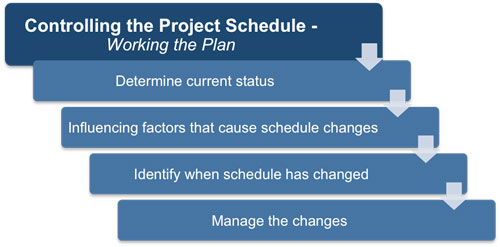 |
It is generally inevitable that there will be adjustments to your schedule along the way, but those adjustments will be easier to deal with if they are made early on the process. Accurate reporting is another crucial piece of the time puzzle. Having specific checkpoints along the way that are pre-determined will make it easier for you to track the progress of the project as a whole - and the progress of individual team members within the project.
There are certain key documents that are shown in the diagram below that are needed as inputs to controlling the project schedule.
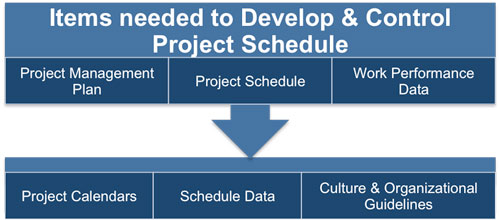 |
Without accurate and reliable reporting, it will be basically impossible to follow along with the progress of the project and make amendments to the schedule as needed. A good project manager will be consistent about tracking progress and will require the same of all the team members involved.
Closing the Process
As mentioned earlier, experience is a big part of being able to accurately time a project from start to finish. So, when a given project is finishing up, that is a great time to review what has taken place - and how long it has taken. While it might be too late to adjust the time line for the current project, this information can be incredibly valuable for future work. Which parts of the job took longer than was planned? Which parts went fast? What kind of steps could be taken in future projects to streamline the process and lower the overall time needed to reach completion? There are many questions that can be asked during the closing process, and much valuable information to be gained.
Discipline is required when the project is nearing a close because it is tempting to just be done with the project and move on to the next. The is especially true when you have been working on the same project for months or even years - you may be tired of dealing with it and hoping to work on something new. However, having the discipline to go through the closing process and analyze your time management successes and failures will help make you a better project manager down the line.
Projects are all about time. Getting them done on time means they are more likely to stay on budget, and they are more likely to meet the needs of those above you. There are several modeling techniques that you can use to assess different scenarios and the element of risk attached to each one. These schedule scenarios are then compared to the schedule baseline and the project management plan for alignment and the one with the 'best fit' will be selected.
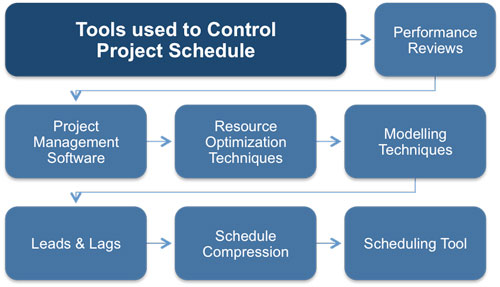 |
Good time planning is a skill that can be developed with experience, but even a new project manager can have some success simply by asking the right questions and relying on the right people. Going into a project with an open-ended deadline is just asking for trouble, and is a sure way to waste resources as well. Learn how to stay on time and you will be a big step closer to leading productive projects.


